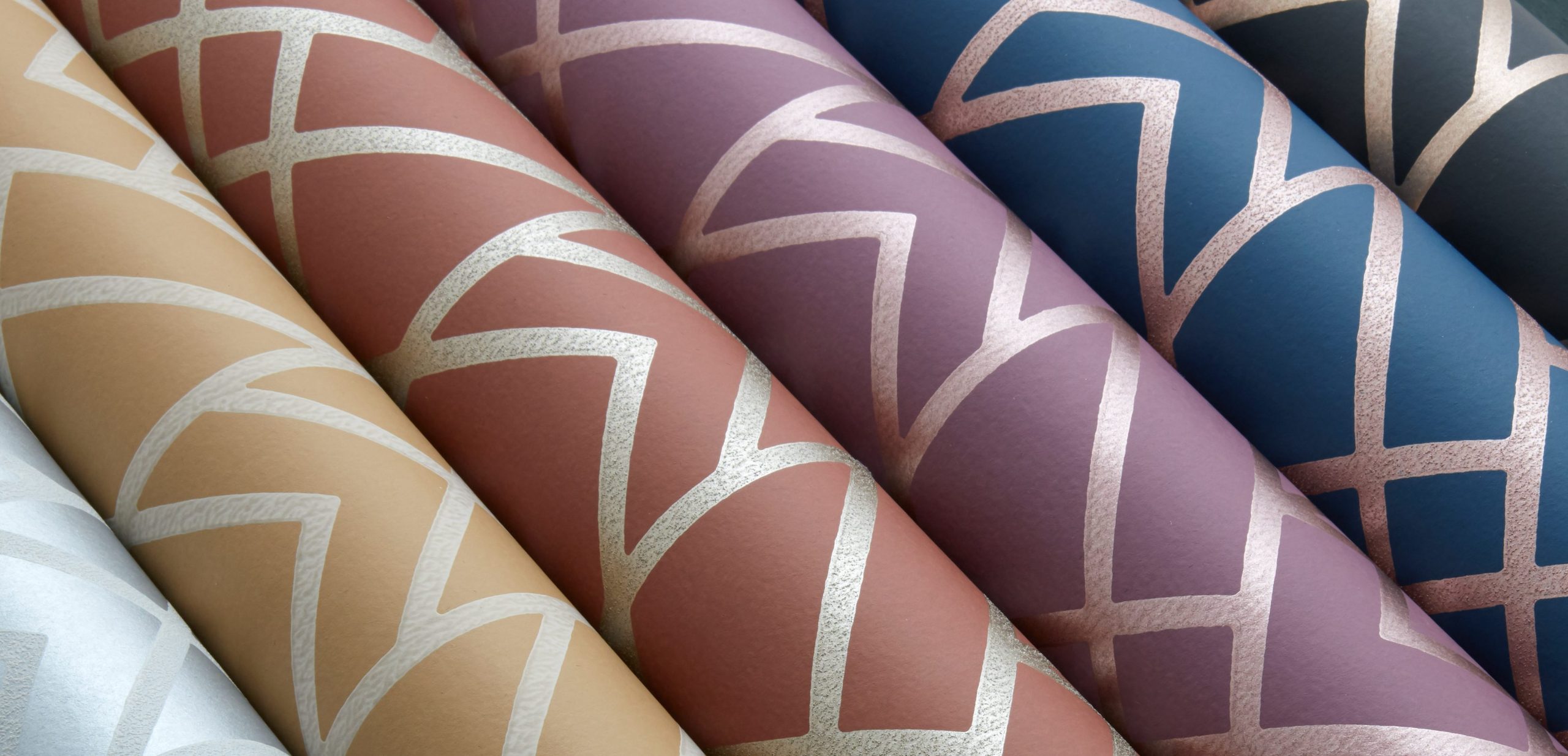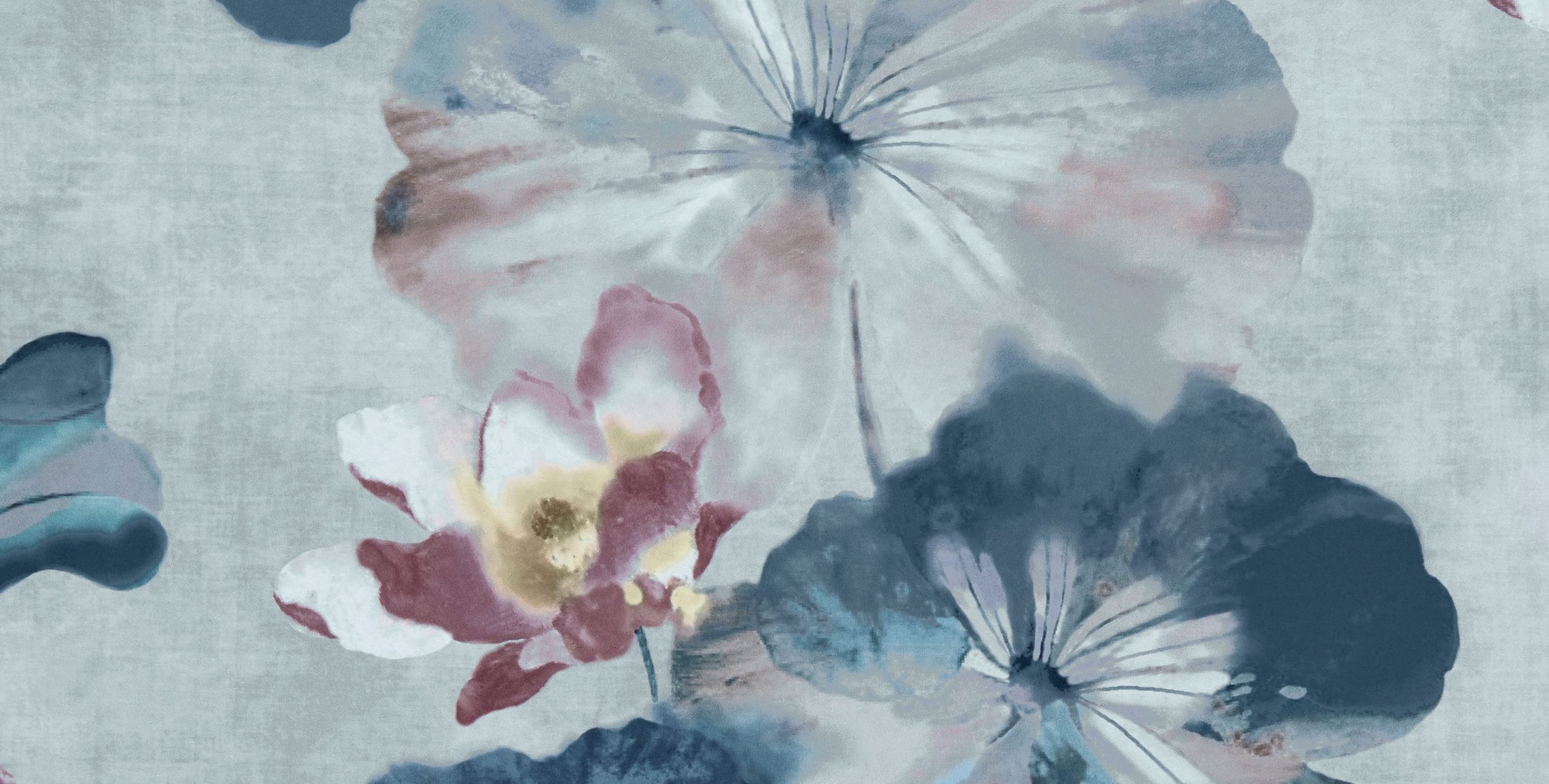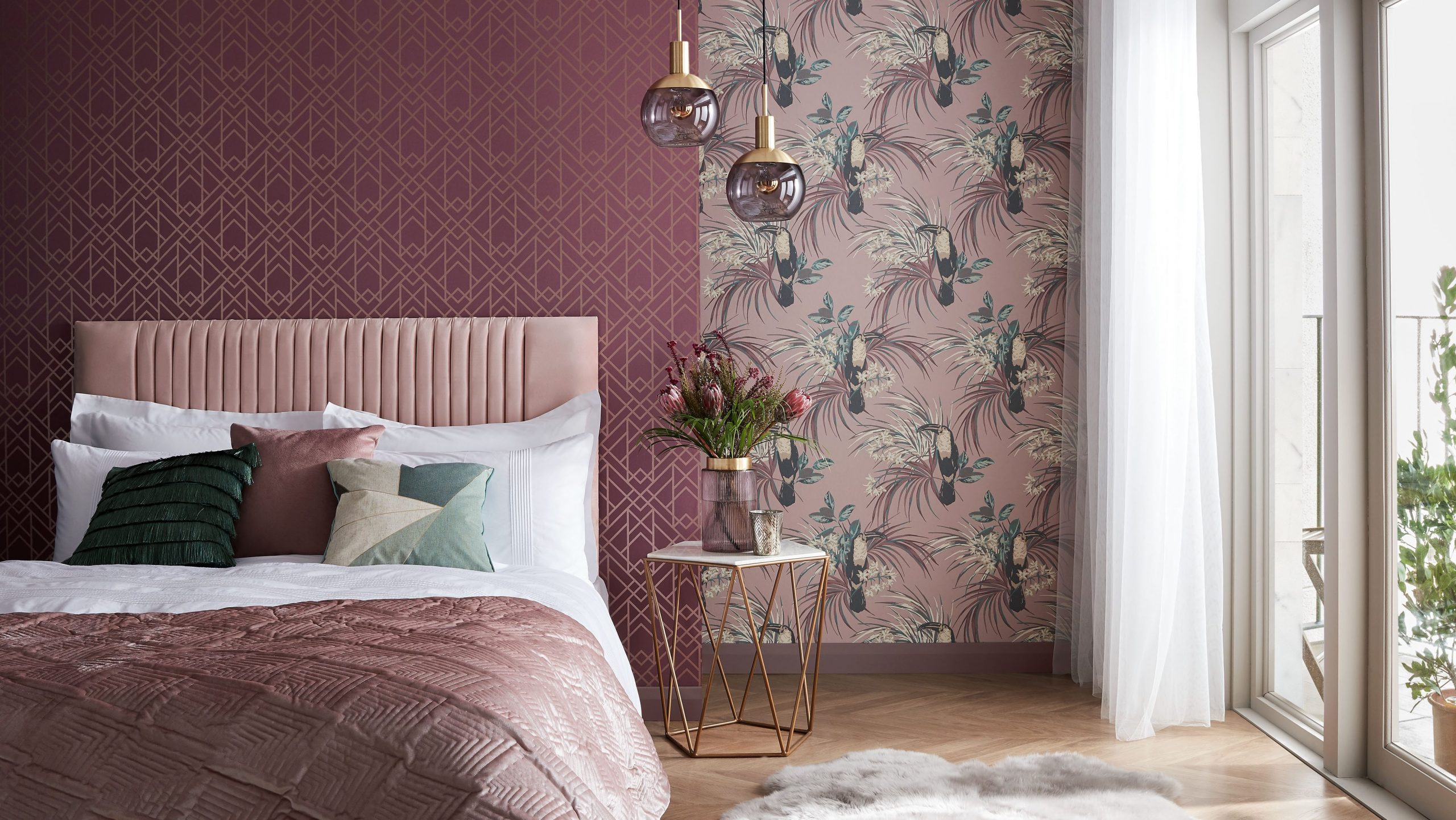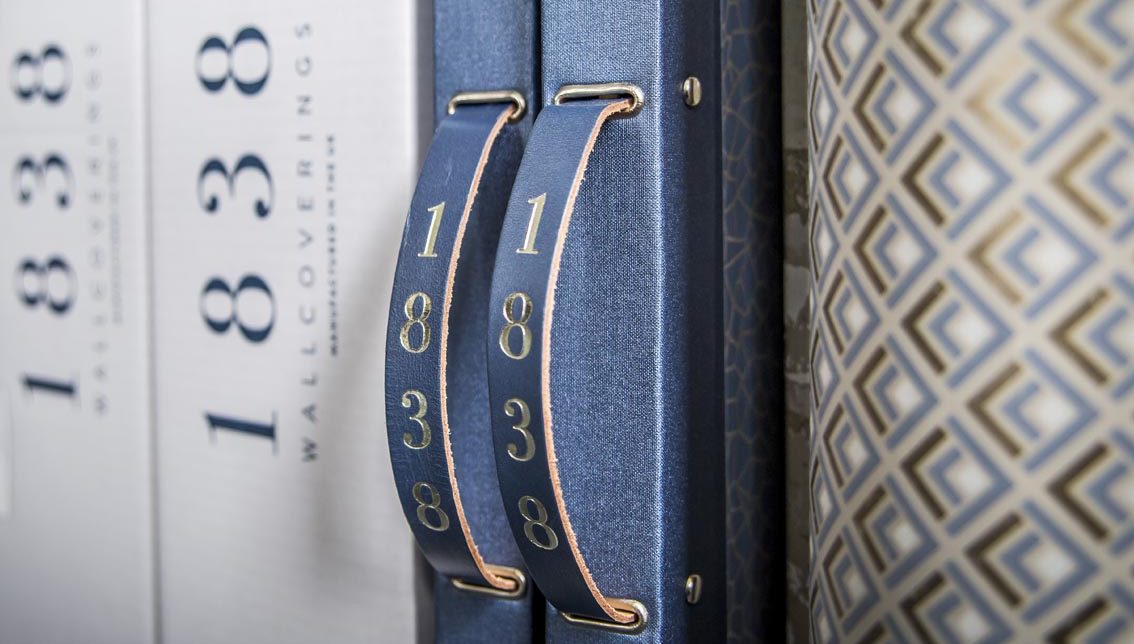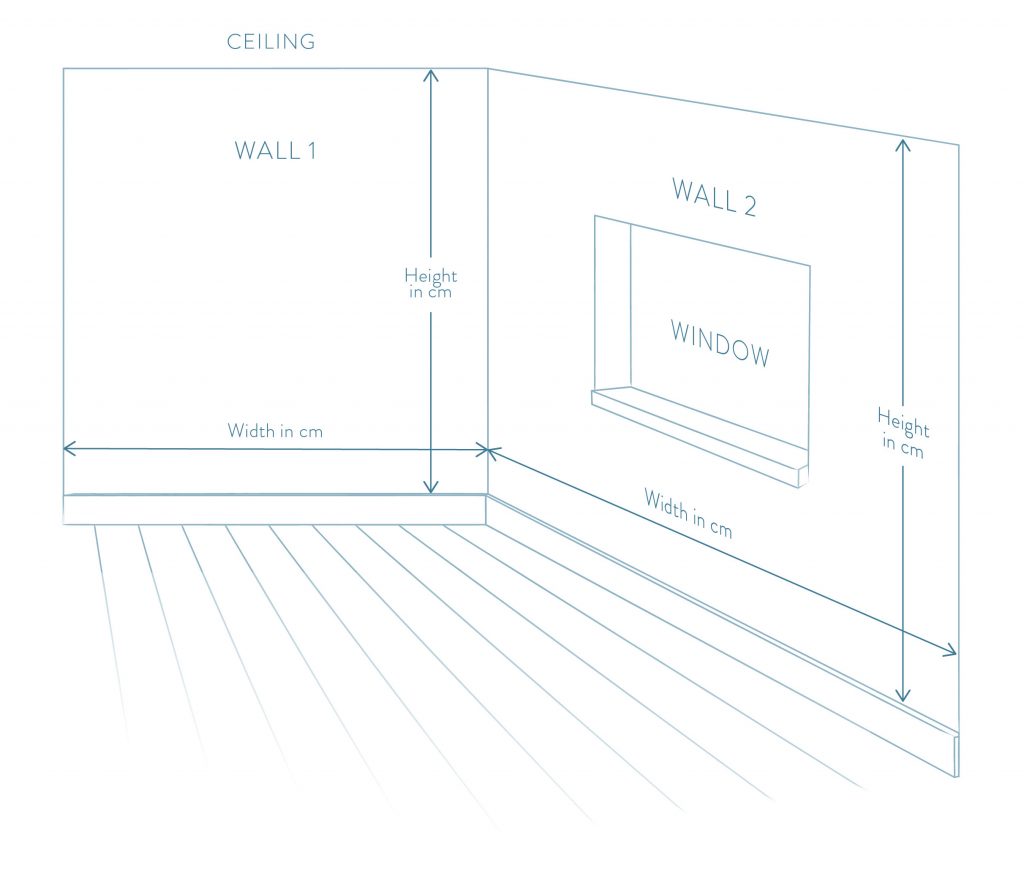Inspiration
Preparing for Wallpaper
How to prepare for wallpaper
Like most DIY tasks, the better prepared you are, the quicker and more smoothly your decorating job will go. To ensure you achieve the best results and a room you’ll be proud of, there are a few simple steps to check off first. Then, once the preparation is complete, you can focus on the exciting part of bringing your new décor scheme to life.
In this blog post, we’ll take you through:
- How to measure for wallpaper
- How many rolls of wallpaper you need
- How to prepare walls for wallpaper
- Which type of wallpaper paste to use
- Tools needed for wallpapering
1. How to measure for wallpaper
You’ve selected a fabulous wallpaper design, but have no idea how much wallpaper you’ll need for your room?
- The first step is to accurately measure the walls you’re going to cover in wallpaper. Use a tape measure to measure the width of the first wall you want to paper to the nearest centimetre.
- Then measure the height of the wall from the top of the skirting board to the ceiling, again to the nearest centimetre.
- Do the same for any further walls you want to wallpaper, ignoring any windows or doors, and note the measurements down in metres eg. Wall 1 = 2.45m wide by 2.80m high.
2. How many rolls of wallpaper do I need?
For 1838 wallpapers use our Rolls Calculator, but as a general guide you can normally expect to get 3 drops of wallpaper from one roll, if the walls in your room are 2-3 metres high. This is based on the standard roll width of 52cm and length 10 metres. Some rolls are sized differently to this standard and may have large pattern match repeats, so it’s worth checking the product information on the website or label. If in any doubt, it’s best order more than you may need as unopened rolls can normally be returned.
We’ve made it easy to work out how many rolls of 1838 wallpapers you’ll need. Our website has a handy Rolls Calculator on every product page that will calculate the number of rolls for you.

Simply enter in the measurements of each wall in metres (to the nearest centimetre), click calculate and it will do the rest!
You can add in as many walls as you want at Add wall+

Please remember these quantities are a guide only and if in doubt we’d always advise ordering more than you need. Any unopened rolls ordered on our website can be returned to us. See our Returns Policy for full details.
The Rolls Calculator doesn’t apply to Murals . To work out how many rolls of a mural you’ll need, see our How to hang a wall mural post.
3. Preparing walls for wallpaper
It’s important to ensure your walls are clean, dry and even before starting to wallpaper. This way you’ll get the sleek finished look you want. Whatever the condition of the walls in your room, our top tips below should cover it:
1. Remove any old wallcovering
If you’re replacing a paste the wall wallcovering, this should peel off the wall dry in large strips, thanks to the non woven backing. Removal of a standard wallpaper will take a little longer and you’ll need to first soak with warm water, score and then scrape off. It may be quicker to use a wallpaper stripper. If you’re struggling, or you don’t know what type of wallpaper you’re removing, water or a wallpaper steamer will help.
2. Wallpapering over wallpaper
We would never recommend wallpapering over old wallpaper, especially if your existing wallpaper is vinyl. However, if you want to try this over other types of wallpaper as a quick fix, make sure the existing wallpaper is smooth, untextured and fully adhered to the wall. Don’t forget to check that you can’t see the old wallpaper through the new one first!
3. Remove loose paint or old, flaky plaster
Any loose paint will need removing prior to wallpapering and scrape off powdery, flaky surfaces to ensure your wall is completely smooth.
4. Wallpapering painted walls
You can wallpaper over painted walls, but don’t forget to roughen painted surfaces first with sandpaper and size the wall to help with wallpaper adhesion.
Sizing involves covering the walls with a thin layer of diluted wallpaper paste (approximately 50% water to 50% paste) and allowing it to dry.
5. Fill any imperfections
If you have any damages, small holes, cracks or marks on the wall fill these imperfections with wall filler and smooth over with sandpaper.
6. Clean your walls
Once you’ve removed any wallcoverings and filled any imperfections, it’s a good idea to give your wall a dust down and vacuum the room to ensure all dust and dirt particles are removed. You can clean your walls down with sugar soap to remove grease and dirt. Sugar soap is a mild detergent used for decorating as it doesn’t leave any residue behind that would hamper adhesion. It gets its name from its appearance in powdered form, but you can also get a liquid version. Simply follow the instructions on the packaging to use. If your walls have mould or mildew, sizing your walls (see point 4) will also help with this.
7. Wallpapering newly plastered walls
If your walls are newly plastered, allow them to dry out completely before wallpapering.
Sizing (see point 4) newly plastered walls can really help reduce the absorbency the plaster, then it won’t soak in all your paste straight away.
8. Lining uneven walls
For an optimum result you can line your walls with lining paper before hanging your wallcovering. The lining paper should be hung horizontally to ensure the joins of the lining paper won’t coincide with the seams of the wallpaper. This is known as cross-lining.
9. Paint your woodwork first
We’d always recommend painting your woodwork; skirting boards, door frames etc. first before hanging your new wallpaper. This way you won’t get any paint splashes on the paper.
Allow the paint to dry fully according to the manufacturer’s instructions, before starting to paper.
4. Which type of wallpaper paste to use?
 There are several types of wallpaper paste to choose from. You need to make sure you choose a paste that’s suitable for the wallpaper to ensure proper adhesion and the finished look you’re after. For 1838 wallpapers we’d recommend our own 1838 paste, but for general information the most common wallpaper pastes are:
There are several types of wallpaper paste to choose from. You need to make sure you choose a paste that’s suitable for the wallpaper to ensure proper adhesion and the finished look you’re after. For 1838 wallpapers we’d recommend our own 1838 paste, but for general information the most common wallpaper pastes are:
1. Paste the Wall Paste
Paste for non woven wallcoverings, where you apply paste directly to the wall, instead of the paper itself. Our own 1838 paste is this type of adhesive.
2. Cold Water Paste
This is a powder that is mixed with cold water. Care needs to be taken not to get any lumps in the mix that will show through your wallpaper. It’s a budget option for standard paste the paper wallpapers and not suitable for 1838 wallpapers.
3. All Purpose Paste
The idea behind this paste is that it should be suitable for most wallcovering types. Available in ready-mixed or powder form, however, we would not advise using it for our wallpapers.
4. Heavy Duty Paste
Used for heavy and vinyl wallcoverings, but again not suited to 1838 products.
1838 Paste
We have our own 1838 paste the wall wallpaper paste that’s perfect for all our wallcoverings. Available in a 5kg tub, or 2.5kg tub. As a rough guide, the 2.5kg paste tub should be enough for 4 rolls. The website will suggest which size of paste tub you need based on the number of rolls in your basket.
Alternatively, you should use an equivalent good quality, PH neutral, solvent free, fungicide protected, light grade adhesive.
Do not use self-mix adhesives for 1838 wallcoverings. All purpose and heavy-duty pastes are not suitable for our wallcoverings
5. Tools needed for wallpapering
To hang our wallpapers you’ll need:
1. Plumb line
Basically a plumb line is a weight on the end of a piece of string, but it’s a crucial piece of kit to ensure your wallpaper is hung straight.
2. Wallpaper paste
We recommend our 1838 paste for our wallcoverings.
3. Roller, tray and brush
Pour paste into a tray and spread it on the wall with a roller. Use a small brush to get paste into the corners and edges that the roller won’t reach.
4. Smoother
The perfect tool for smoothing away any bubbles or creases. Certain smoothers can also be used as a straight edge for cutting.
5. Knife
Ensure the blade is sharp for a smooth, straight edge cut.
6. Scissors
Any large, sharp scissors are suitable, or wallpaper scissors with special long blades are ideal.
7. Clean, damp cloth
For wiping away any paste that may get onto the front of the wallcovering.
And that’s it!

Once you’ve finished preparing for wallpaper, see our How to Wallpaper or How to Hang a Wall Mural post for the next steps.

